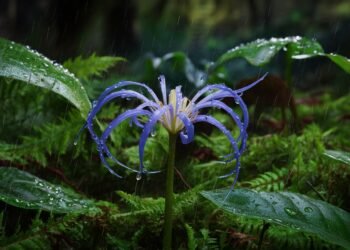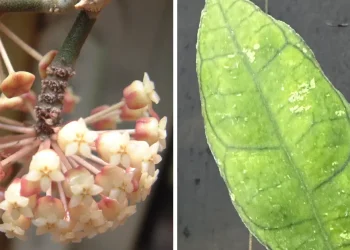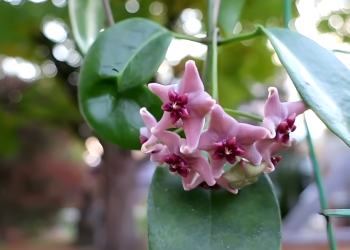Before I started growing my own green beans, I wasn’t aware that this was a thing. You see, when you buy green beans from the grocery store, they’re like one another, perfectly green and snappy. But it was only when I started growing green beans in the garden that I noticed that they had an unexpected fuzzy texture and were all covered with this hairy coating.
Now I know that this fuzz on green beans is completely normal and perfectly safe to consume. But why do they have this coating, and does it serve any particular purpose? That’s exactly what we will focus on in this article!
Why are Green Beans Fuzzy?
As unexpected as it may sound, green beans always have some level of fuzziness on the pod. But sometimes, these tiny hairs are more noticeable than other times.
Green beans can develop a fuzzy texture due to a natural defense mechanism known as trichomes. Trichomes are tiny- hair-like structures that many plants, including green beans, produce on their leaves and stems.
They serve various purposes, such as deterring pests and reducing water loss through transpiration.
The amount of fuzziness in green beans can vary based on various factors. The most determining factor is genetics, where some bean varieties have more pronounced trichomes than others. But also environmental factors can influence the amount of these hairs.
It’s typically harmless and not a cause for concern. It’s simply a part of the plant’s natural adaptation to protect itself in its environment. This fuzz feeling will also naturally fade away as you cook them.
Don’t Confuse it with Fuzzy Mold
However, there truly is one case when fuzzy green beans mean something bad. And that’s when the fuzziness is caused by a pathogen, like mold.
When you see fuzz on freshly harvested beans or beans still growing on the plant, that’s not a cause for concern. But improperly stored beans can also develop fuzz, although the texture will be diametrally different.
Fuzzy mold appears thicker more irregular, and can sometimes play with different colors ranging from white to blue. Whereas it’s safe, the natural counterpart will be finer, adhering closely to the surface of the beans.
Fresh beans can vary in shelf life but will stay good for about 5 to 7 days. I would recommend using as much as possible right away and freezing any surplus.
Environmental Factors Affecting Fuzzines of Beans
Environmental factors can play a role in the amount of fuzziness that develops on the surface of green beans. It can be a good indicator that something is not right with your plant.
- Humidity: Higher humidity levels can encourage the growth and development of trichomes on the surface of green beans. In more humid conditions, you may notice a slightly fuzzier texture on the beans.
- Temperature: A study1 found that with temperatures around 20-25°C (68-77 °F), the number of trichomes increases and decreases as the temperatures go lower. So, more fuzz may mean healthier green beans!
- Plant Stress: From the temperature perspective, plants grow trichomes when the temperature is right. However, environmental stressors, such as water scarcity or exposure to pests, can trigger the plant’s natural defense mechanism, including the production of trichomes. But, the way trichomes develop varies based on the stimuli.2
Does Fuzzy Surface on Green Beans Affect the Taste and Texture?
The fuzzy surface on green beans, caused by the presence of trichomes, primarily affects the appearance of the beans. Nearly all the differences are usually gone if you are heat-treating the beans.
From the perspective of texture, if there are abundant trichomes, the bean can get a slightly firmer texture. I tried to taste both green beans – from the garden with quite a bit of fuzz on them and from the grocery store – and couldn’t notice much of a difference. There was a slight difference, but I think if you don’t have both side-by-side, you won’t even notice.
When you focus on taste, the fuzz does not alter the taste at all. When I tasted both versions, of course, my BIO beans from the garden were more loaded with flavor, but that’s not because of the fuzz.
Before you go…
Green beans are so packed with juice and flavor. And the fuzziness you may see on them from time to time is completely normal, and it’s caused by the presence of trichomes. With this out of the way, you may try to grow your own beans, what do you think?
Green beans are technically unripe beans, so you can easily grow your own, even inside. I recently published an article for my teacher friend that includes a list of the easiest and fastest-growing beans and a simple, step-by-step guide on how to grow them, even in places with limited light. Make sure to check it out…













